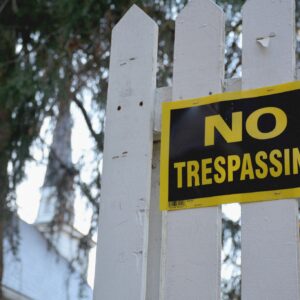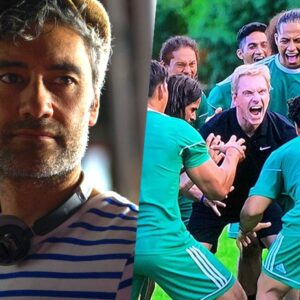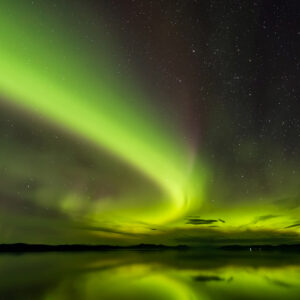A new indigenous map has been introduced to the public domain which depicts the original territories and correct names of the the Indigenous people of North America. It is the work of Aaron Carapella, a Cherokee of Oklahoma who created the map from humble beginnings.
“I don’t have any formal training in cartography. I have a degree in marketing.” says Carapella. “I just plotted them on an actual cardboard; four posters together and put the names in over years.”
Carapella brought his research together with a graphic designer and together they came up with three maps; one showing mainland U.S.A., one showing only Canada, and the other the North American content in its entirety. “I was the nerdy kid who was into native history.” Carapella joked. “I would go to pow wows and I’d see these maps and they were kind of cheesy; there was only 50 tribes in all of North America.
Unsatisfied with this, he researched American copyrights to see if a similar map existed and found none. This is the first map produced which includes all North American indigenous nations in their own languages on their original lands. It is now being brought into the school systems across the country, libraries and restoring perspectives on the foundations of the North American continent.
Over the years Carapella was careful to contact members from the traditional community of each nation to verify the spelling and the original area each nation came from. Carapella observed, “I’ve noticed a trend that people maintain their own tribal name based on being in their traditional homeland. I think a lot of it is because the names they used for themselves usually are descriptive phrases. So, a lot of tribes call themselves, ‘we are the people at the mouth of the river’. If you have been removed from your territory through the trail of tears, or the long walk by like a thousand miles from where that mouth of the river is people no longer think of themselves as ‘the people at the mouth of the river’. When you get dispossessed of your traditional homeland, there is a cultural rift that happens. A loss that happens from being off of where you are supposed to be.”
The work is still in progress. Carapella intends on gathering names and places for Alaska, Mexico and the rest of the indigenous nations of North America. “I’m constantly updating them.” he stated.
The maps are available for purchase on his website http://tribalnationsmaps.com. There is also a new project in the works for folks to purchase hats and t-shirts bearing the original names of the nations.














where is the Mandan tribe on this map?
There are many inconsistencies on this map.. for 1. the Six nations originated in Mexico and moved north easrt wiping out Algonqkian tribes as they pushed north. The Adirondeck were exterminated or nearly by the Mohawk and other Six Nations people.Also the Wabanaki/Abenaki were also on the coast of what is now called New England . They were killed or pushed out by a coalition of English and Wamanoag tribes who sided with the English against them.
In the article, it said the map “depicts the original territories and correct names of the the Indigenous people of North America”. It also says “The work is still in progress. Carapella intends on gathering names and places for Alaska, Mexico and the rest of the indigenous nations of North America”. And Caparella said “I’m constantly updating them”.
So I guess there is room for updates if indigenous people want to contribute more and new information.
Your history is a little mixed up. The Wampanoag are the same people as the Wabenaki. The British just came up with ad hoc names to refer to certain groups, but it’s actually the same name just a different dialect in the same language family. The different pronunciations were a result of the slight variation in dialect among the different bands and a the British referring to them as different people because there were many different groups, but it’s the same word “People of the Rising Sun”. They are eastern woodlands Algonquin people. I am Lenape, an Algonquin people of southern New York and Pensilvania.
I have heard this before about Iroquois conning from Mexico but I don’t think it’s true. There is no linguistic relationship. Do you have a reference for this? I have never heard of them wiping out Algonkian tribes. My Algonquin ancestors, the Lenape, paid tribute to the Mohawk Nation and were brought into the Iroquois Confederacy but we’re never wiped out by them or even close. On the contrary they acted as our allies and protectors once we were part of the confederate. The Great Law of Peace explains how nations are welcomed into the Confederacy and accept the Great Law of Peace.
When I examined the maps, I noticed that the Five Nations Haudenosaunee are shown in the Finger Lakes and Mohawk Valley region south of Lake Ontario in what is now upper New York State U.S.A. and they are not shown in what is now Ontario.
How come many now say the Five Nations Haudenosaunnee territory included southern Ontario? How did the Five Nations Haudenosaunee get into, take over and set up camps in other peoples’ territory in what is now southern Ontario?
Are you asking be a use you don’t want to do the research? It has to do with the alliance they had made with the British against the French. When the British retreated from the Colonies, the Mohawks lost a huge amount of territory in New York, so in order to keep good relations with the Mohawks the British agreed to let them settle in Canada, which was outside of the area claimed by the US. After the American victory, the British ceded their claim to land in the colonies, and the Americans forced their allies, the Mohawk and others, to give up their territories in New York. Most of the Mohawk migrated to Canada, where the Crown gave them land in compensation. The Mohawks at the Upper Castle fled to Fort Niagara, while most of those at the Lower Castle fled to Montreal. This land was settled on the Grand River (Ontario), and extended 100 miles from its mouth to the head of Lake Erie where it discharges.
Joseph Brant led a large group of Iroquois out of New York to what became the reserve of the Six Nations of the Grand River, Ontario. Another Mohawk war chief, John Deseronto, led a group of Mohawks to the Bay of Quinte. Other Mohawks settled in the vicinity of Montreal and upriver, joining the established communities (now reserves) at Kahnawake, Akwesasne, and Kanesatake.
On November 11, 1794, representatives of the Mohawks (along with the other Iroquois nations) signed the Treaty of Canandaigua with the United States, which allowed them to own land there.
The southern Ontario area was originally the land of The Iroquoian Huron Wendat tribe. First they were devastated by European disease as all Native tribes were, then later they were at war with the Six Nation Nations, probably due to manipulation by European colonizers who exploited old rivalries between tribes. The Six Nations and their British allies defeated the Hurons of southern Ontario, which caused many of them to follow Jesuit missionaries to Quebec and some to join other Huron bands in Ohio. As stated above, the British encouraged the Six Nations to move into the Huron territory, which had become somewhat vacant, because the British could not keep their promise of protecting the territories of the Six Nations in what would become New York, because the British lost their power in the area after the Revolutionary war. In order to keep their relationship with the Iroquois active, the British offered to extend their alliance with them by granting them lands (which no colonizing nation rightfully could) in Canada in Huron territory. So yes I think the map should call it Huron Wendat land.
Original territories? That would imply a permanently settled home back to the origin of occupation. No migration allowed. Let us once again embrace the concept of the “Noble Savage” living in perfect harmony with nature and each other. No conflicts, no environmental degredation, no truth.
This is great but you’re missing a couple tribes in the Maidu area. The Konkow and Nisenan, they tend feel left out often.
wow thank you, thats great .
:( was hoping for a large pic of the map!
Hi Jon, I added a US and a Can version, both large enough to read the print.